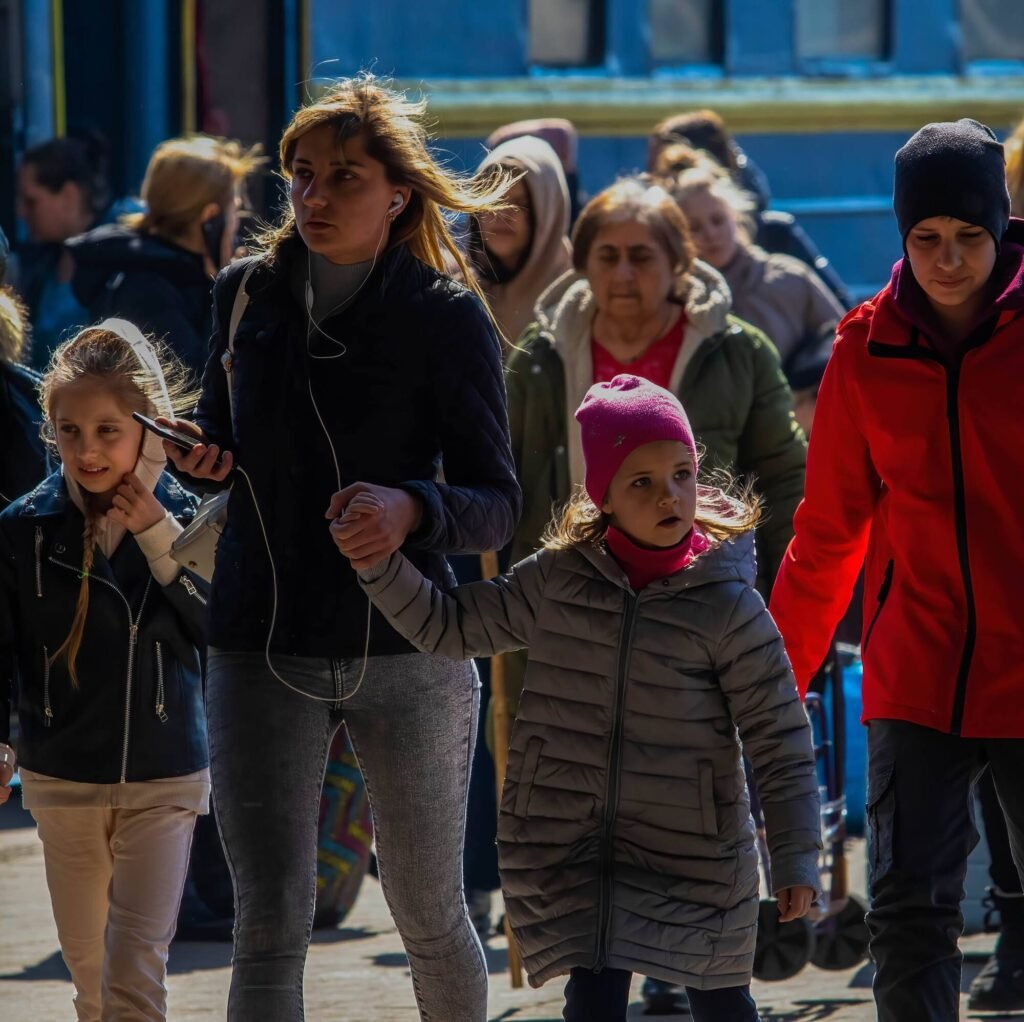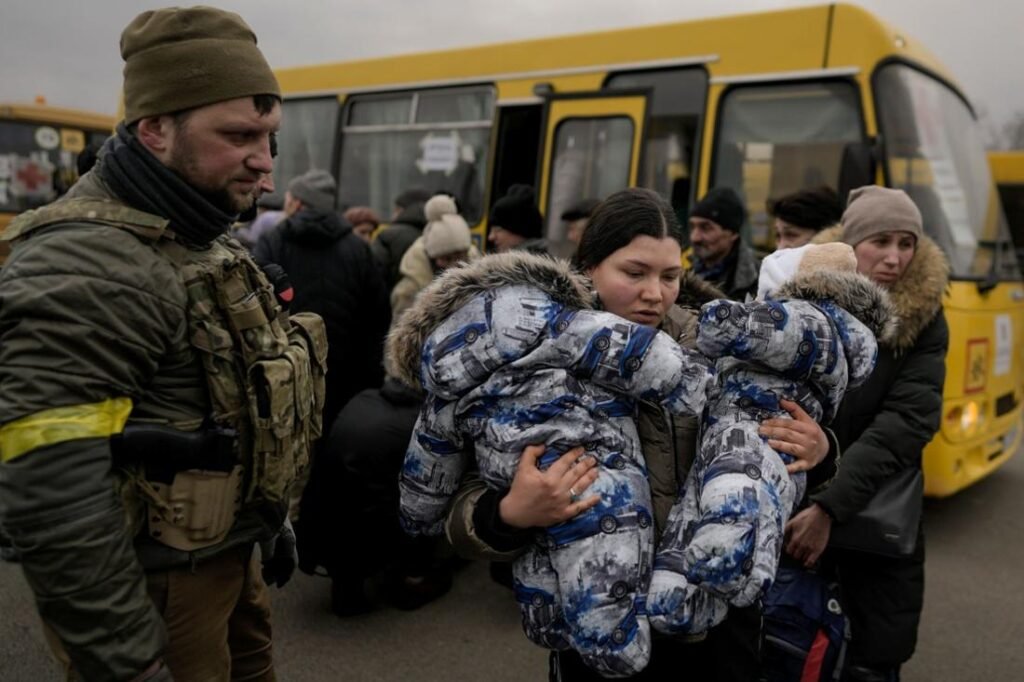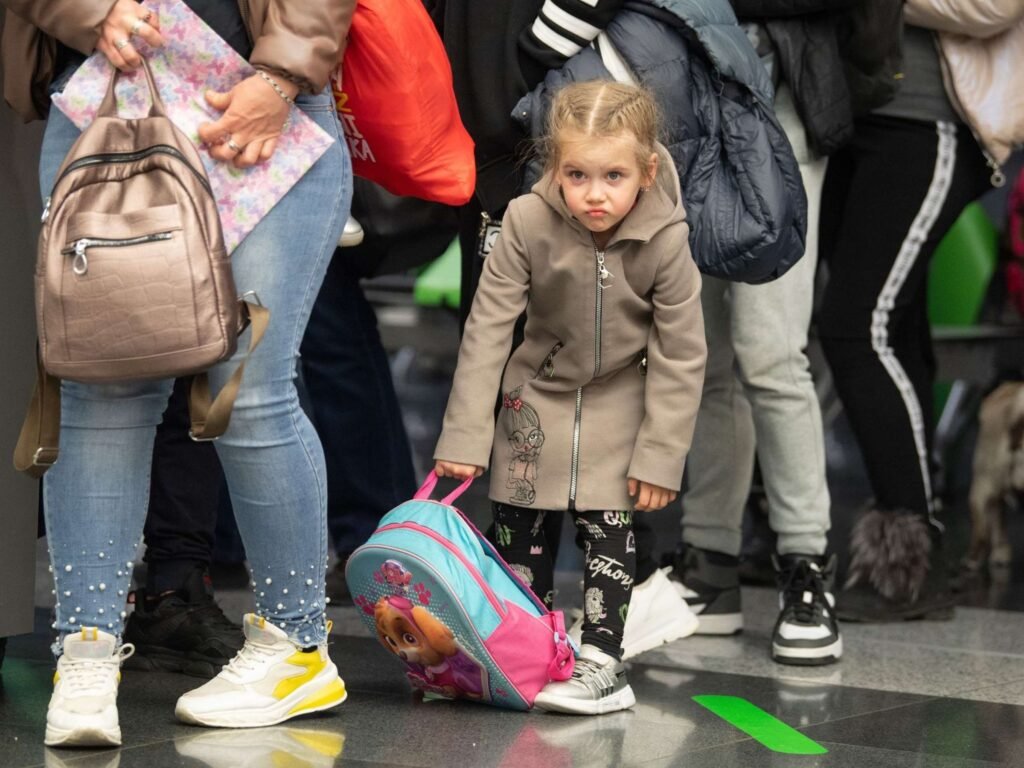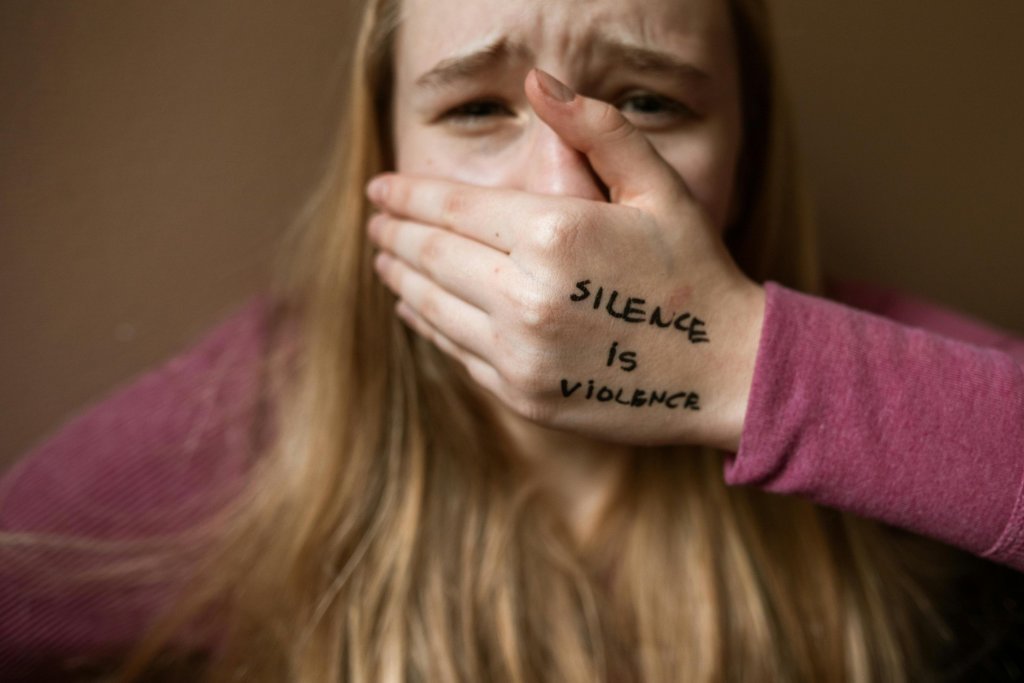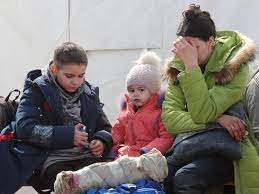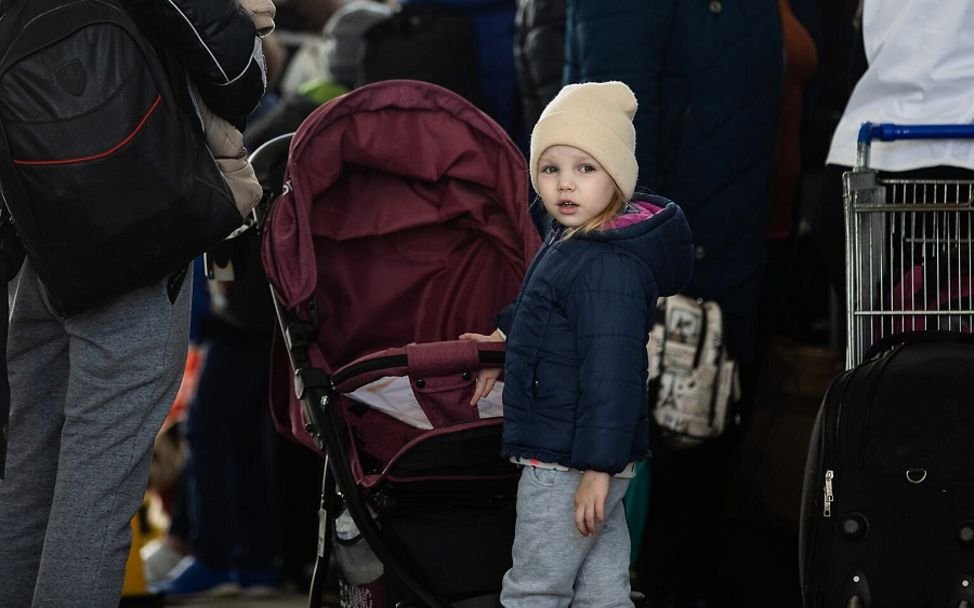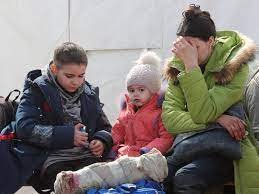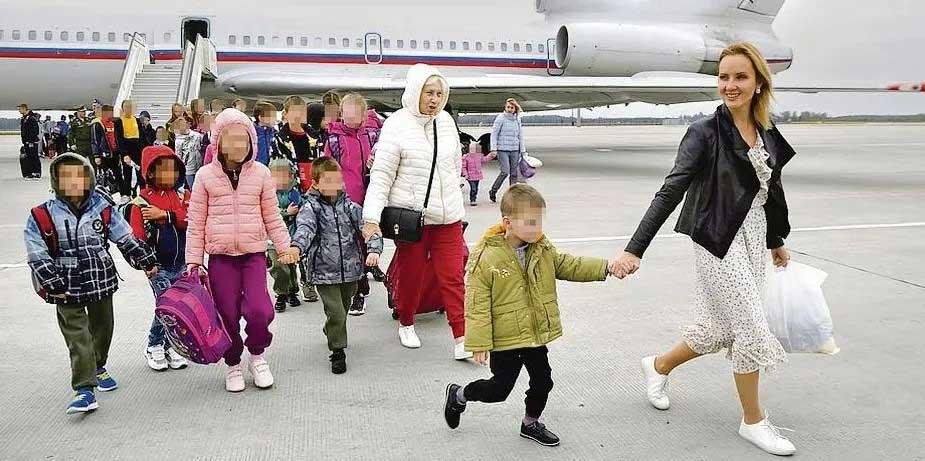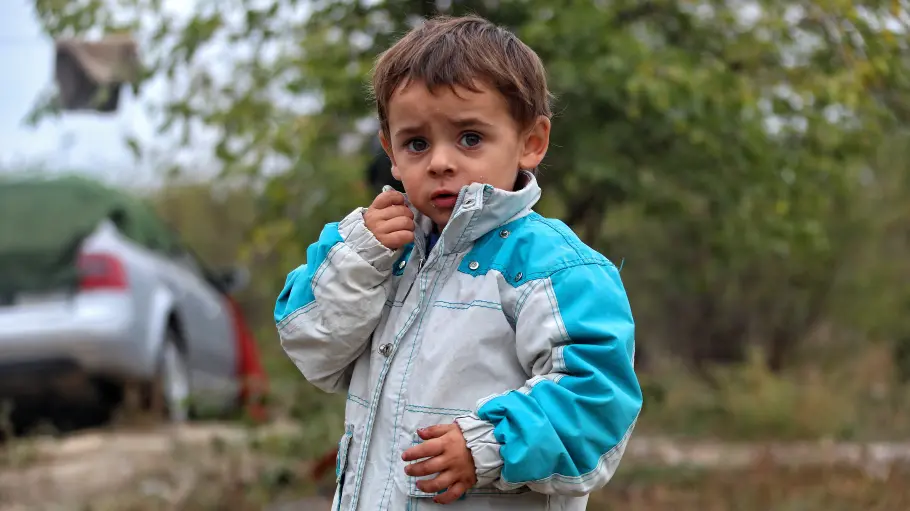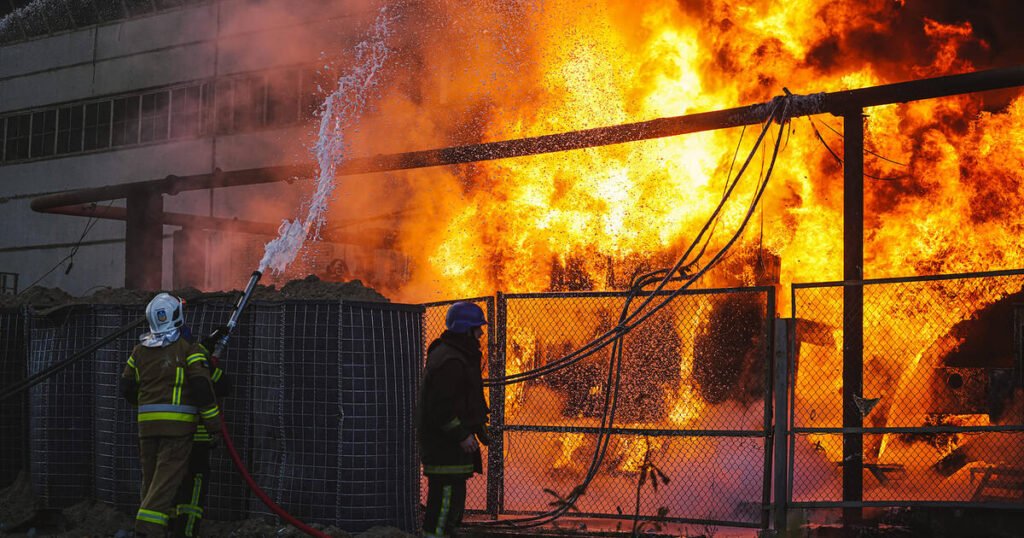Deported and deprived of their own identity, one of the worst war crimes ordered by the state
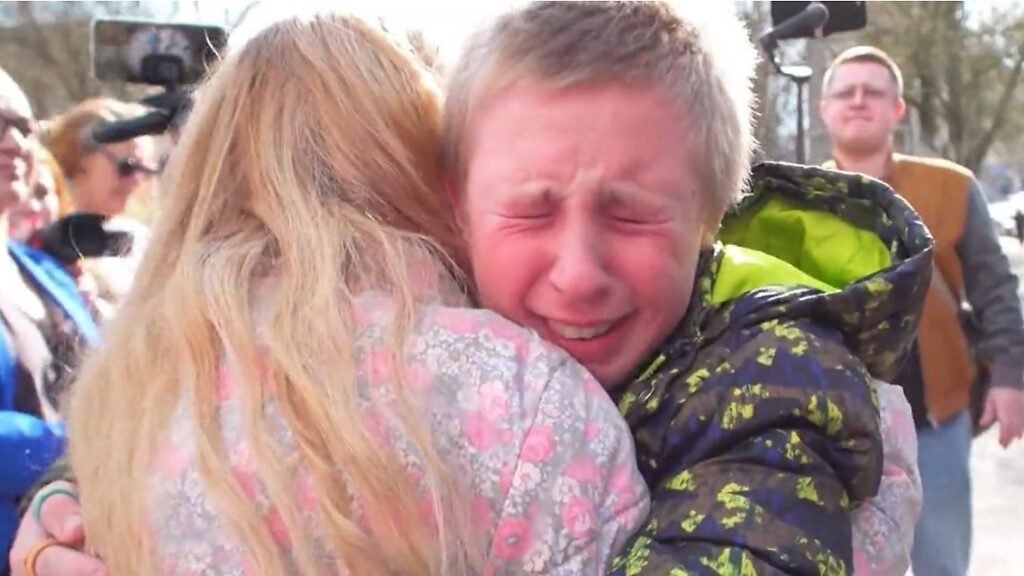
The abduction of Ukrainian children to Russia is a serious humanitarian and political problem that has attracted widespread international attention. This issue is of particular importance as it not only calls into question the individual freedom and safety of the children concerned, but also reveals deeper historical and geopolitical tensions between Ukraine and Russia. The targeted abduction of children can be seen as part of a larger strategy aimed at undermining Ukrainian identity and culture and bringing about long-term demographic changes.
Historically, relations between Ukraine and Russia have been characterized by conflict and power struggles. The annexation of Crimea in 2014 and the subsequent war in eastern Ukraine have further exacerbated tensions. In this context, the abduction of Ukrainian children is not only a war crime, but also a means of exerting political and cultural influence. The abduction and subsequent adoption of the children into Russian families is intended to systematically change their identity and promote their assimilation into Russian society.
From a political point of view, these abductions raise considerable questions about compliance with international human rights standards. They violate various international agreements, including the Geneva Conventions and the UN Convention on the Rights of the Child. The international community, including organizations such as the United Nations and the International Criminal Court, has repeatedly called for action to stop these practices and hold those responsible to account. This blog post aims to shed light on the various dimensions of this complex issue. In addition to the historical and political background, the humanitarian impact and legal implications will also be analyzed. By taking a comprehensive view, it aims to raise awareness of the urgency of this problem and emphasize the need for international intervention.
Historical context and background
The abduction of Ukrainian children to Russia is a serious incident that is deeply embedded in the historical and political context of relations between Ukraine and Russia. These relations have always been characterized by tensions, conflicts and geopolitical power struggles. A better understanding of the current situation requires a look at the historical events and political developments that influence these abductions. Since the collapse of the Soviet Union in 1991, Ukraine has sought to strengthen its independence and sovereignty, while Russia has repeatedly attempted to assert its influence in the region. Russia’s annexation of Crimea in 2014 and the subsequent war in eastern Ukraine are just two examples of the ongoing conflicts.
These events have significantly shaken trust between the two nations and created a climate of insecurity and hostility. The abductions of Ukrainian children must be seen against this backdrop. They are not only a humanitarian crisis, but also a political tool used in this geopolitical game. Children are often seen as innocent victims in conflicts, and their abduction can serve as a tactic for destabilization and intimidation. This highlights the complexity and scale of the situation. International organizations such as the United Nations and the International Committee of the Red Cross have condemned the abductions and are calling for the immediate return of the children. These reactions underline the global importance of the issue and the need for international cooperation to prevent such human rights violations. The role of these organizations is crucial in putting pressure on the parties involved and ensuring that international standards and laws are respected. The abduction of Ukrainian children to Russia is a symptom of deeper geopolitical tensions and conflicts.
A comprehensive understanding of these events requires not only an analysis of the current situation, but also a consideration of the historical and political dynamics that gave rise to them.
Methods of abduction
The abduction of Ukrainian children to Russia is carried out using a variety of methods that are systematic and often brutal. First of all, recruitment by force is a common method. Children are abducted from their schools, homes or even from the street and forced to get into vehicles that take them to unknown locations. These forced recruitments are often carried out by armed groups that are either directly supported by state actors or in close cooperation with them. Another common method is deception. This involves luring children and their families with false promises, such as the prospect of better living conditions or educational opportunities. In some cases, forged documents and identities are also used to conceal the abduction and make prosecution by the Ukrainian authorities more difficult. Violence also plays a central role in these abductions. Children are often abducted with the threat of physical violence or the actual use of violence. These acts of violence are often carried out in the presence of witnesses in order to spread a message of fear and intimidation.
The role of armed groups is particularly noteworthy here, as they not only carry out the abductions, but also organize the logistics and transport of the abducted children. The transport routes are complex and well organized. Abducted children are often transported via several intermediate stops to make it more difficult to track them. This logistics is supported by a network of accomplices operating both within Ukraine and in Russia. The children are often taken to remote areas where they are difficult to locate and have limited access to Ukrainian authorities or international organizations. Overall, these methods paint a frightening picture of the systematic and well-organized abduction of Ukrainian children. The combination of coercion, deception, violence and complex logistics poses a significant challenge for the Ukrainian authorities and the international community.
Effects on the victims
The abduction of Ukrainian children to Russia has far-reaching and serious consequences for the victims. The psychological stress to which the children are exposed often begins immediately after the abduction. Separation from their family and familiar surroundings leads to profound feelings of fear and insecurity. This emotional stress can lead to post-traumatic stress disorder (PTSD), anxiety and depression.
Younger children are particularly affected as they find separation from their parents especially traumatic.Physically, the abducted children are often exposed to poorer living conditions. A lack of medical care and inadequate nutrition can significantly affect their health. There is also a risk that they will be involved in forced labor or other exploitative activities, which can cause additional physical and psychological damage. Socially, the children experience an uprooting that threatens their cultural and linguistic identity. By being sent to Russia, they lose contact with their homeland and their cultural heritage. This social isolation can lead to difficulties with integration and significantly impair their ability to build stable social relationships. In the long term, abduction has profound consequences for children’s development. The chances of a normal school and professional career are severely restricted.
The trauma and psychological stress can also affect their ability to care for themselves and be autonomous as adults.
Some children may have difficulty building trust with other people, further limiting their social and professional prospects. The abduction of Ukrainian children to Russia is therefore not only an immediate crime, but also has long-term effects that can shape the children concerned for the rest of their lives. It is essential that this issue receives international attention and that measures are taken to help the victims and prevent future abductions.
International reactions and measures
The abduction of Ukrainian children to Russia has caused global concern and prompted a wide range of responses and actions from the international community. Various international organizations, governments and non-governmental organizations (NGOs) such as the ComeHome Association have actively addressed the situation in order to protect the children concerned and hold those responsible to account.
The United Nations (UN) has repeatedly expressed its concern about the abductions and called for the immediate return of the children. The UN Security Council has passed resolutions specifically condemning these acts and calling for immediate action.
These resolutions send a clear message to Russia that the international community will not tolerate such acts. The European Union (EU) has also responded by imposing sanctions on Russian individuals and organizations involved in the abductions. These sanctions include travel bans and asset freezes to increase pressure on Russia and force the immediate return of the children. In addition, the EU has made diplomatic efforts to promote dialog with Russia and find a solution.
Non-governmental organizations (NGOs) are playing an essential role in providing humanitarian aid and support to the affected families. Organizations such as the ComeHome Association, Amnesty International and Human Rights Watch have published comprehensive reports documenting the abuses and drawing international attention to the problem. They also provide legal support and advice to the families of abducted children and work closely with international institutions to facilitate the return of the children.
In summary, the international community has taken a variety of measures to respond to the abduction of Ukrainian children to Russia.
Through sanctions, diplomatic efforts and humanitarian aid, they are trying to increase the pressure on Russia and find a fair and swift solution for the families concerned. International solidarity and commitment are crucial to protect children’s rights and send a clear message against such serious human rights violations.
Legal aspects and challenges
The abduction of Ukrainian children to Russia raises complex legal issues and poses a serious challenge for the international community. The legal framework for combating such crimes is based on a large number of international conventions and national laws. Among the most important international instruments is the Hague Convention on the Civil Aspects of International Child Abduction, which aims to ensure the swift return of abducted children and protect their rights.
In addition, the UN Convention on the Rights of the Child plays a crucial role by enshrining children’s rights to protection from abduction, sale and trafficking. Despite these international agreements, implementation in practice remains a challenge. Prosecution in cases of child abduction is often difficult as it requires the cooperation of several countries and compliance with complex legal procedures. National laws in Ukraine and Russia are also relevant, but often insufficiently synchronized. In Ukraine, there are specific laws that criminalize child abduction and provide for severe penalties. Russia, on the other hand, has its own legal provisions, which may not always be in line with international standards. This discrepancy can further complicate the effective prosecution and return of abducted children.
Another obstacle is the political dimension of the problem. In many cases, diplomatic tensions between the countries involved become an additional hurdle.International criminal trials and judgments are therefore of great importance to set precedents and provide clarity on legal and moral responsibilities. Some cases, such as that of the European Court of Human Rights, have shown that international bodies can play an important role in enforcing children’s rights. In summary, the abduction of Ukrainian children to Russia remains a complex legal issue that requires close cooperation between international and national institutions. The creation of a clear legal framework and consistent prosecution are crucial in order to protect the rights of the children concerned and prevent future abductions.
Efforts to return the children
The return of abducted Ukrainian children from Russia is a complex and challenging undertaking that requires the cooperation of several actors.Governments, non-governmental organizations (NGOs) such as the ComeHome Association and international institutions play a central role here. The Ukrainian government has set up special task forces to coordinate the identification and repatriation of children. These task forces work closely with international organizations such as the United Nations and the International Red Cross to take the necessary legal and logistical steps.
NGOs are also heavily involved in the repatriation efforts. Organizations such as the ComeHome Association, Save the Children and Human Rights Watch document cases of abduction and provide legal support and psychological care for the affected families. These NGOs often work at the interface between the governments and the families to make the process as smooth as possible. They also carry out valuable educational work to raise awareness of the problem and exert international pressure on Russia. Although there are success stories, they are rare and usually the result of intensive efforts that often last for years. One example is the successful repatriation of a group of 15 children last year, which was made possible by the coordinated efforts of the Ukrainian authorities and an international NGO.These cases offer hope and serve as a model for future repatriations. Nevertheless, these efforts face considerable challenges. The legal hurdles are high and the political situation is often tense. Furthermore, the psychological trauma of the children and their families is an additional burden. Despite these obstacles, the actors involved are working tirelessly to repatriate the abducted children in the hope of enabling them to return home safely.
Conclusions and outlook
The abduction of Ukrainian children to Russia is a serious humanitarian problem that requires urgent international attention. The evidence to date shows that this practice not only violates international law, but also has a profound psychological and social impact on the children concerned and their families.
The children are torn away from their home and culture, which can lead to long-term identity and integration problems. Increased international cooperation is needed to tackle this problem effectively. The role of international organizations such as the United Nations and the International Criminal Court is central to this. These institutions must not only investigate and document incidents, but also take sanctions and measures against those responsible.
It is also important that the children affected are able to return to their families as quickly as possible. This requires diplomatic efforts and negotiations at the highest level. Another important aspect is supporting the affected children and their families after their return. Psychological support and social reintegration are essential to help the children come to terms with their traumatic experiences and reintegrate into their communities. National and international aid organizations play a crucial role here and must be provided with sufficient resources to ensure this support. In the long term, prevention must also be strengthened. This includes both improving the security situation in the affected regions and creating mechanisms that enable early warning and intervention. Only through a comprehensive and coordinated approach can we ensure that the abduction of Ukrainian children to Russia is stopped and those responsible are brought to justice. The international community must not and cannot remain inactive here.

